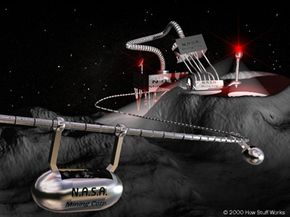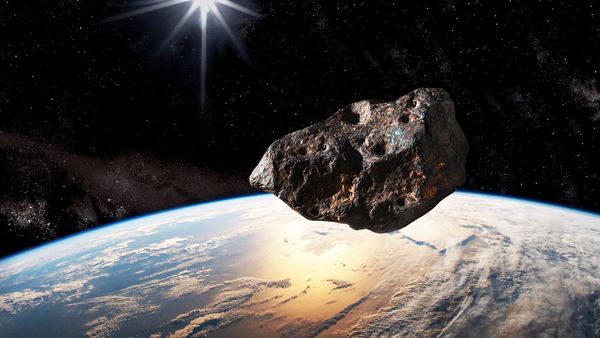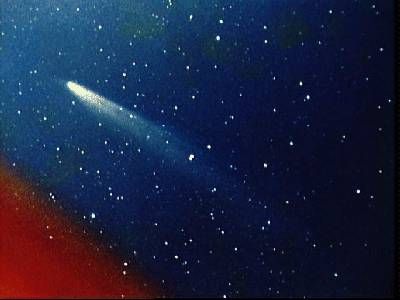Scientists think asteroids are leftover material from the early formation of the solar system or debris from the destruction of a planet. There are tens of thousands of asteroids circling the sun. Most are grouped inside the asteroid belt, between the orbits of Mars and Jupiter. Some asteroids that stray from this orbit, though, flying close to Earth on occasion -- you've probably heard about the possibility of these asteroids smashing into Earth in the future, as in the movie "Armageddon."
Most asteroids fit into three basic categories:
- C-type - More than 75 percent of known asteroids fit into this category. The composition of C-type asteroids is similar to that of the sun without the hydrogen, helium and other volatiles.
- S-type - About 17 percent of asteroids are this type. These contain deposits of nickel, iron and magnesium.
- M-type - A small number of asteroids are this type, and they contain nickel and iron.
Even without a manned mission to do a full-scale study of an asteroid, scientists know a lot about what asteroids contain. Astronomers use telescopic spectroscopy, which analyzes light reflected from the asteroid's surface, to find out what might be there. In addition to iron, nickel and magnesium, scientists think water, oxygen, gold and platinum also exist on some asteroids.
Water interests space explorers most because it could help keep a space colony alive. Without water, there is really no way to move forward with human exploration of space. Water could also be broken down into hydrogen and oxygen to form rocket engine propellant. The metal ore on the asteroids could be mined and used for building spacecraft and other structures for a space colony.
Corporations that might not be interested in exploring space for the adventure and science could be interested in the treasures that a space mining operation could send back to Earth. One NASA report estimates that the mineral wealth of the asteroids in the asteroid belt might exceed $100 billion for each of the six billion people on Earth. John S. Lewis, author of the space mining book Mining the Sky, has said that an asteroid with a diameter of one kilometer would have a mass of about two billion tons. There are perhaps one million asteroids of this size in the solar system. One of these asteroids, according to Lewis, would contain 30 million tons of nickel, 1.5 million tons of metal cobalt and 7,500 tons of platinum. The platinum alone would have a value of more than $150 billion!
Asteroids have amazing potential for industry. But what will it take to land on an asteroid, find these valuable materials, extract them and process them? In the next section, you will find out how asteroid mining operations might supply the Earth and its colonies on other planets with a plenitude of materials.




